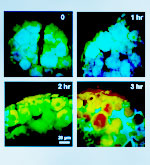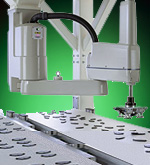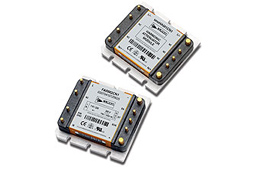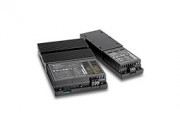Successful Applications
Photonics Application – Uses ENMods for Low Ripple and Noise

With the invention of the laser in 1960, photonics ― the use of light to perform functions normally thought of as the realm of electronics ― came into being, but not until the late 1960s did the word “photonics” appear. It didn’t, however, become common usage until the 1980s when fiber optics was adopted by the telecom industry. Now, the actuality of photonics, if not the name, has become pervasive: digital cameras, fiber optic cable TV, barcode scanners, laser welding, surgical endoscopy, tattoo removal, and, of course, microscopy. One of these, called fluorescence lifetime imaging microscopy (FLIM), produces an image of a fluorescent sample, not at one point in time, but over its lifetime as it decays. FLIM can be used to detect FRET (Fluorescent Resonance Energy Transfer), an action related to many diseases such as cancer and diabetes.
The Vicor customer is a leading designer and manufacturer of photonics equipment and advanced imaging systems, including FLIM imaging, for research and biomedical applications. In earlier designs they usually used linear supplies for output power requirements of 20 W to 50 W to keep ripple / noise low. As their power needs increased to the range of 200 W to 400 W they changed to switched solutions. One power application is a thermal-controlled laser driver for the FLIM tool, which uses an ENMod AC front end. The ENMod provides full compliance to EN61000-3-2, Harmonic Current, EN55022, Level B, Conducted Emissions, EN61000-4-5, Surge Immunity, EN61000-4-11, Line Disturbances, and EN61000-3-3, Inrush Current. A 15 V Mini serves a Peltier element, and a 15 V Micro drives the laser with a constant current. For new designs they are looking at Maxi Mini Micro converters, partly because of the wide trim range.
Pharmaceutical, Biotech, and Diagnostic Testing Laboratories – Rely on Robots Powered by FlatPAC AC-DC Switchers

The first digitally operated and programmable robot was installed in 1961 to lift hot pieces of metal from a die casting machine and stack them. Today, robots are in widespread use performing jobs cheaper or more accurately and reliably than humans in many commercial, industrial, and even laboratory environments. Generally, the field of laboratory automation comprises many different automated laboratory instruments devices, software algorithms, and methodologies used to enable, expedite, and increase the efficiency and effectiveness of scientific research in laboratories. The application of technology in today’s laboratories is required to achieve timely progress and remain competitive. Laboratories devoted to activities such as automated clinical and analytical testing, diagnostics, and many others, would not exist without laboratory automation.
The Vicor customer is a manufacturer of robotic systems that automate functions for pharmaceutical, biotech, and diagnostic testing laboratories. A typical system uses a Cartesian coordinate robot with a multi-axis arm, but they make SCARA (Selective Compliant Assembly Robot Arm) robotic systems as well. They all combine hardware and software, which is usually transparent to the user.
The primary power supply for their various products have been FlatPAC AC-DC switchers for several years. Their DC requirements are very low power (5 V, 1/2 A, for example). The power supplies deliver power for sensors, solenoids, and motion control, feeding lots of loads. The FlatPAC combines the Vicor workhorse VI-200 family of DC-DC converters with a modular package and front-end subassembly to provide from 50 to 600 W of output power from one to three outputs.


